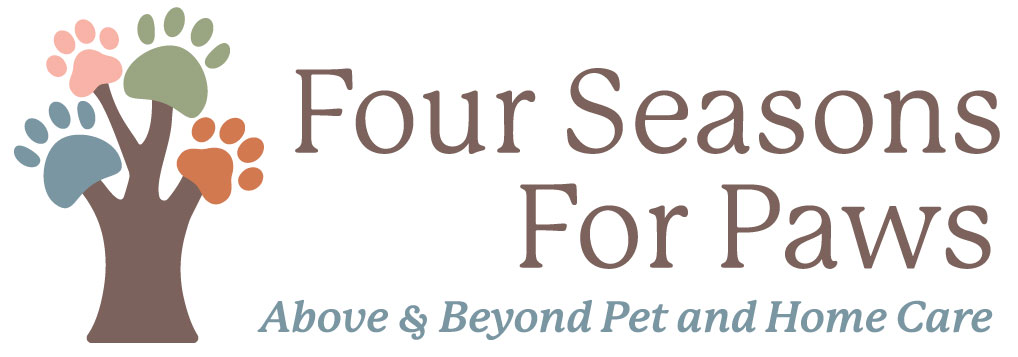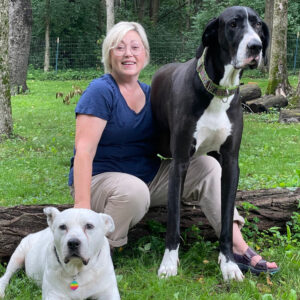Companionship is the number one reason people choose to live with dogs. Dogs are sensitive, empathetic, and social. They know how we’re feeling and respond accordingly. Had a bad day at work? There’s nothing more soothing than being greeted by your dog or telling them about the day’s problems. At least in my life, my dogs have been through some pretty dark times; they’ve listened to me rant and cry, giving me support in a way that another human simply could not. That’s why we open our homes to dogs. They meet our need for companionship. But what about the dogs? Are we allowing them to fully experience who they are genetically? Are we letting them do doggie things? Lets unpack the benefits of letting your dog act like a dog.
The Doggie Do List: Decoding Common Behaviors
Do you ever get curious about your dog? Have you ever wondered why they do the things they do? Stop and think about it without judgment or frustration. All dogs do these things, regardless of their breed, breed mix, or ownership status:
- dig
- jump
- pull away (when restrained)
- forage
- observe
- socialize
- expore
- sniff
- taste
- feel safe
Of these normal dog behaviors, many dog owners dislike these behaviors:
- digging
- jumping
- pulling on the leash (restraint)
- foraging (counter surfing and trashing)
- observing (looking out the window might trigger barking)
- socialize (greeting people or dogs enthusiastically)
- exploring (zig-zagging on a leash, wandering away, not coming when called)
- sniffing (rather than walking)
- tasting (grabbing a stick or some mulch, chewing)
- feel safe (not wanting strangers to pet them)
Pet owners often label these completely normal behaviors as problem behaviors. Dogs doing normal doggie things can create tension between people and pets. A different approach that brings harmony to the person-pet relationship is acknowledging that dogs are different and must express normal behavior for well-being. It’s easy for those of us who choose to live with dogs to forget that dogs aren’t human.
From Frustration to Harmony: Why Suppressing Doggie Needs Backfires
Rather than suppressing normal dog behavior, it’s often more efficient and less frustrating to provide time for your dog to do doggie things. If you allow your dog to express their normal behavior, you’ll have a calmer, happier dog. Calm dogs are easier to live with. There’s another benefit: better health and well-being. Suppressing behavior increases your dog’s level of stress. It’s been well established that increased stress decreases well-being and causes health issues. Did you know that dogs, like people, can develop health problems when living in stressful conditions? Letting your dog do doggie things improves your dog’s quality of life.
I’m not advocating a doggie free-for-all. This doesn’t mean your dog is allowed to dig in the couch or counter surf. But the fact is that your dog needs opportunities to engage in doggie things like those mentioned above.
Know Your Pup: Discovering Your Dog's Unique Preferences
While the list of doggie things is common to all dogs, each dog has preferences. Over time, your dog’s preferred doggie things will change. Young dogs tend to explore with their mouth more than adult dogs. Digging tends to be more intense in the spring. Senior dogs tend to jump less but forage more as they age.
How do you know what your dog’s preferences are? Take some time and observe your dog while she’s off-leash. What does your dog like to do? What do you find yourself preventing your dog from doing? That’s probably the doggie thing that is most meaningful for your dog. My silly bull-terrier mix, Bopp, is a huge digger. He’ll dig in the furniture, the toy boxes, and the carpet…digging is his favorite thing to do. I could spend a huge amount of time trying to suppress the behavior. I could use commands like “leave it” or interrupters like “no.”
Or, I could recognize that he has a strong need to dig and provide “legal” places for him to do that normal doggie thing. Choosing the latter decreases frustration for Bopp and me while building trust. He can trust me to meet his needs, which includes letting him behave like a dog.
The Joy of Doggie Freedom: Safe Space for Exploration and Play
Observing your dog off-leash in dog-friendly place will help you discover what your dog loves to do. The Learning Dog Academy’s Behavior & Enrichment Center in Whitmore Lake is designed for dogs to:
- dig
- jump
- pull away (when restrained)
- forage
- observe
- socialize
- explore
- sniff
- taste
- feel safe
Dogs can do doggie things in a safe place, off-leash indoors. It’s a place where you can learn about your dog and discover who she is when she’s free to be a dog – no leash, no rules, just sweet doggie freedom. When dogs are first introduced to doggie freedom, it’s not uncommon for them to feel uncertain. Some seek their person’s permission to explore. Others, once unleashed, revel in the freedom they’ve craved. They all share one thing in common. After exploring, they seek their person and invite them to join the fun.
Deeper Bond, Stronger Connection: The Rewards of Letting Your Dog Be a Dog
Our canine companions want to do life with us. They also have a fundamental need to do doggie things. When we provide them time and opportunity to do doggie things, the trust bond between person and pet deepens. And that’s a win for you both.
Cheers,
Delores Carter CDBC, KPA-CTP, FDM


